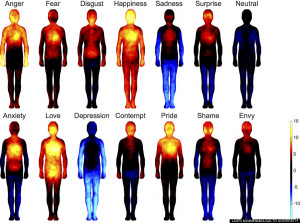I was born a procrastinator. I hate to say it, but I love putting things off to the last second and then rationalizing how “little” time it will take me to get my work done. It never ends up working in my favor — never. So, why do I keep doing it? Why do I push things back until I’m left writing my last blog post at 4:09 a.m. (this one’s for JoePa). Well, Andrew, you were right — I totally regret not doing these sooner. But as long as I’m here, I figured a little research would help be kick this nasty habit. Why do we have the urge do procrastinate, even when we know it won’t end well?
I always thought that procrastination was “human nature”, that it happened to the best and the worst of us. According to research from the University of Colorado Boulder, however, some people are more affected by the procrastination bug than others. Researchers found that some people are more “predisposed than others to take the bait when a new temptation or distraction enters the picture. Likewise, some people are more likely to display impulsive tendencies.” It is believed that those who are more impulsive focus on short-term goals and pleasures, such as watching three episodes of Grey’s Anatomy before finishing a 4,000 words paper, therefore leading to procrastination. Researchers say that while that impulsivity does not cause procrastination, there is a correlation between the two. Correlation need not equal causation, because correlation between the two could arise from direct causation (impulsivity –> procrastination), reverse causation (procrastination –> impulsivity), a third variable (ADHD could cause both procrastination and impulsivity), or chance.
More research, this time from Utrecht University in the Netherlands, also shows that procrastination is a meltdown of sorts, and the loss of self-control. Studies conducted by researchers at the university show that a lack of self-control “links to specific types of procrastination.” These studies found that people who procrastinate and have trouble avoiding temptation are more likely to delay going to bed. The question is: Is this evidence of a lack of self-control, or are people going to bed later because they are trying to complete work that they procrastinated? Both direct and reverse causation are still in play, so we can assume that it’s one or the other, or maybe even both for those over-procrastinators.
Yet, there are some that argue that procrastination can be good for you, to a certain extent. Professor and author of Wait: The Art and Science of Delay Frank Partnoy says that when it comes to decision-making, we should wait until the last second to make our decision. Smithsonian Magazine writes, “Partnoy claims that when faced with a decision, we should assess how long we have to make it, and then wait until the last possible moment to do so.” While this may be beneficial and could help us way our options and think a decision through, is it considered procrastination? Procrastination is the act of delaying or postponing something, but it could also be considered a deliberate and thorough choice-making process.
This would be a tough call, if it weren’t for something that Andrew has drilled into our brains since the first time we stepped into class — YOUR INTUITION IS LOUSY. Because my intuition is to procrastinate, I know that maybe I should try to get things done a little sooner. For those people who aren’t as tempted by short-term pleasures, maybe give yourself some time think things through and really plan. Our intuitions are lousy, and this is why humanity needs science.











